Gluten free dairy free pizza isn’t just a compromise—it’s a whole new way to enjoy Italy’s most beloved dish. I’m Matteo Romano, a Tuscan chef turned gluten-free advocate, and I’ve spent years recreating the pizza I once made in bustling Italian kitchens—without wheat or cheese. In this guide, you’ll get a recipe that brings back the crispy crust, bold tomato flavor, and satisfying toppings—without the discomfort. Whether you’re newly gluten or dairy free, or just looking for a lighter, allergen-friendly pie, this article breaks down the best ingredients, tricks, and options to make your next pizza night absolutely unforgettable.
Table of Contents
1: My Gluten Free Dairy Free Pizza Journey
From Flour-Dusted Aprons to Food Sensitivities
I still remember those late nights in my uncle’s trattoria outside Florence—hands dusted with flour, the scent of rising dough in the air, and Neapolitan pizzas crackling in the wood-fired oven. Back then, I didn’t know “gluten free dairy free pizza” would one day become my mission. I trained the traditional way—kneading wheat doughs, layering mozzarella, living for that perfect, blistered crust.
But years later, across the ocean and deep into my career, I began feeling… off. Low energy. Digestive issues. Doctors couldn’t explain it until one finally asked, “Have you tried cutting gluten and dairy?” Within weeks of making the switch, I felt like myself again. It was a relief—and a heartbreak. My pizza? Gone. Or so I thought.
Determined not to lose the flavors I grew up with, I started experimenting. I tested every gluten free crust out there, from almond flour blends to brown rice and cassava. Some fell apart, some were too chewy. Eventually, I crafted a base that baked golden, held its shape, and let the sauce shine.
A New Way to Honor Italian Tradition
The biggest challenge? Finding a dairy free cheese that melts, browns, and doesn’t overpower. I tried cashew-based blends, coconut oil shreds, and even made my own. Once I paired the right cheese with my homemade crust and a slow-simmered San Marzano sauce, the first bite brought tears to my eyes. This wasn’t just “good for gluten free”—this was just good.
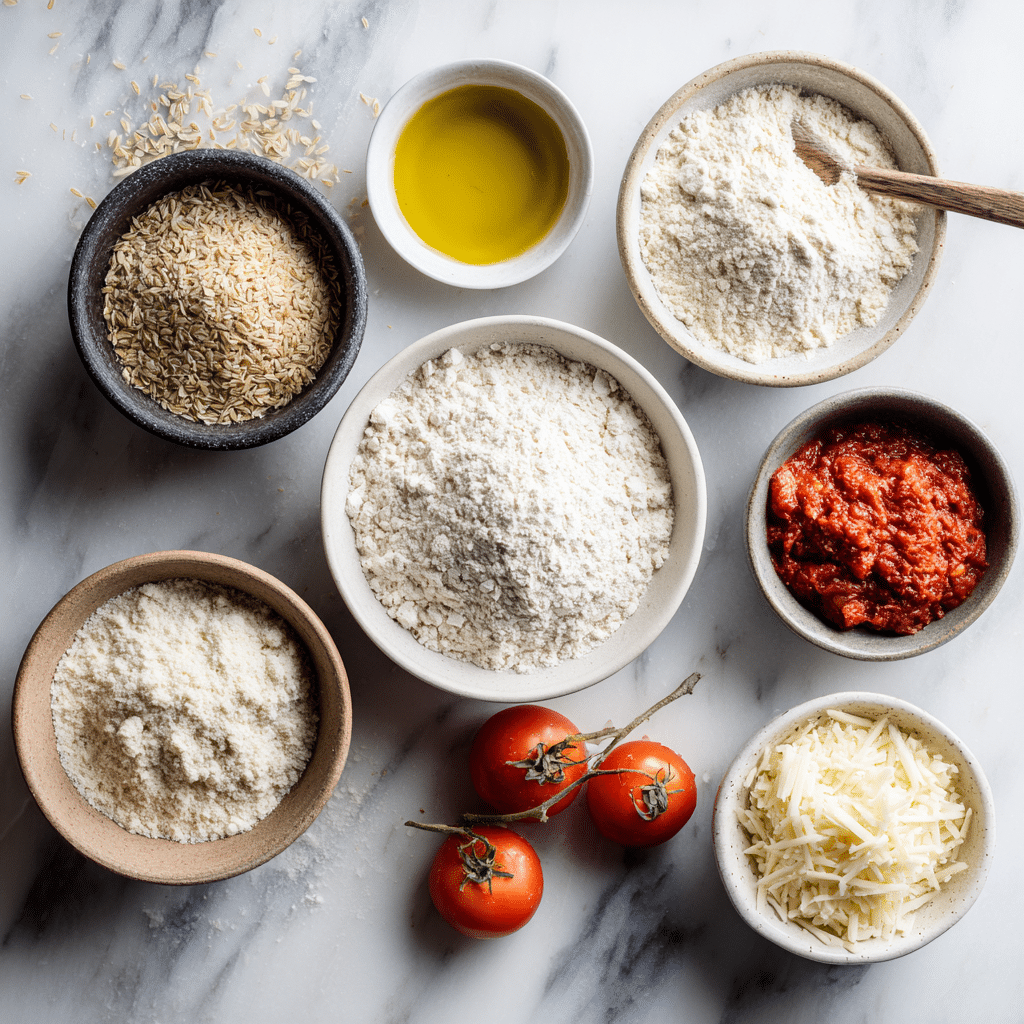
2: Building the Best Gluten Free Dairy Free Pizza Crust
What Makes a Great Gluten Free Pizza Base?
Let’s be honest—most store-bought gluten free pizza crusts taste like cardboard or crumble under toppings. That’s because they miss what traditional wheat provides: stretch, chew, and structure. But with the right combination of naturally gluten free flours and a few binding ingredients, you can create a crust that’s crispy on the outside, soft inside, and strong enough to hold your favorite toppings.
For gluten free dairy free pizza, I recommend a mix of superfine brown rice flour, tapioca starch, and a touch of almond flour for richness. A teaspoon of psyllium husk or ground flax helps bind the dough and mimic the elasticity gluten provides. You’ll also want to add a little olive oil—not just for moisture, but for that classic Italian flavor.
Yeasted vs. Yeast-Free Dough Options
If you’re a fan of that pillowy rise and slight tang in pizza crust, a yeasted dough is the way to go. Give it at least an hour to rise in a warm spot—this gives flavor and texture that can’t be rushed. Don’t be afraid of a wet dough; gluten free flour needs hydration.
Short on time? A yeast-free version with baking powder can still give you a surprisingly good base. It won’t have the same depth of flavor, but it bakes up crisp and golden in under 30 minutes. Just mix, press into a pan, and bake immediately.
Whichever you choose, pre-bake your crust for 10 minutes before adding toppings. This keeps it from getting soggy, especially important when using dairy free cheeses that melt a little differently.
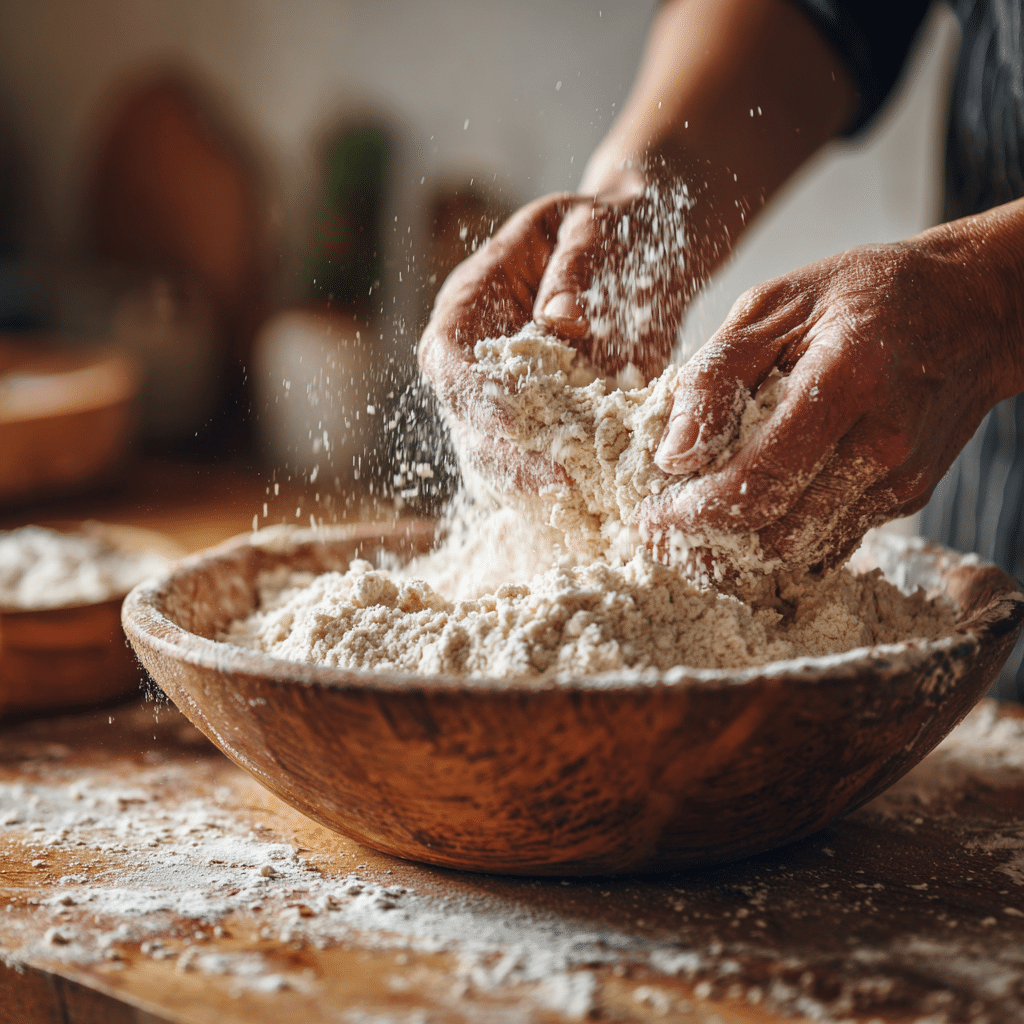
3: Sauce, Cheese & Toppings for Gluten Free Dairy Free Pizza
Tomato Sauce That Brings the Flavor
A gluten free dairy free pizza is only as good as its sauce. Skip the sugar-filled jars and make it yourself—you only need five ingredients: crushed San Marzano tomatoes, extra virgin olive oil, garlic, sea salt, and a few fresh basil leaves. Simmer it gently for 15–20 minutes to deepen the flavor. It’s clean, rich, and brings that old-world taste to your new-school crust.
If you want to mix things up, try a white sauce made from blended cauliflower and garlic or a dairy free pesto with nutritional yeast for a cheesy kick without the dairy.
Choosing the Right Dairy Free Cheese
This is where many gluten free dairy free pizza recipes fall short—bad cheese. Some melt into oil, others taste chalky. After testing dozens, here are three solid options:
- Cashew cheese: Mild, creamy, and easy to make at home. Perfect for spreading.
- Shredded coconut oil-based blends: Brands like Miyoko’s or Violife offer great melt and taste.
- Tofu ricotta: Crumbled firm tofu with lemon, salt, and garlic makes a great topping for rustic-style pizzas.
The trick? Don’t overload. A light sprinkle goes further than a heavy layer, especially with dairy free alternatives. Bake until the cheese is bubbly and starting to brown—usually around 10–12 minutes at 450°F.
Then there are the toppings. Classic combos like mushrooms, arugula, olives, and roasted red peppers all work beautifully. So do unconventional ones like caramelized onion with rosemary, or grilled zucchini with pine nuts. Keep it balanced—don’t drown your crust.
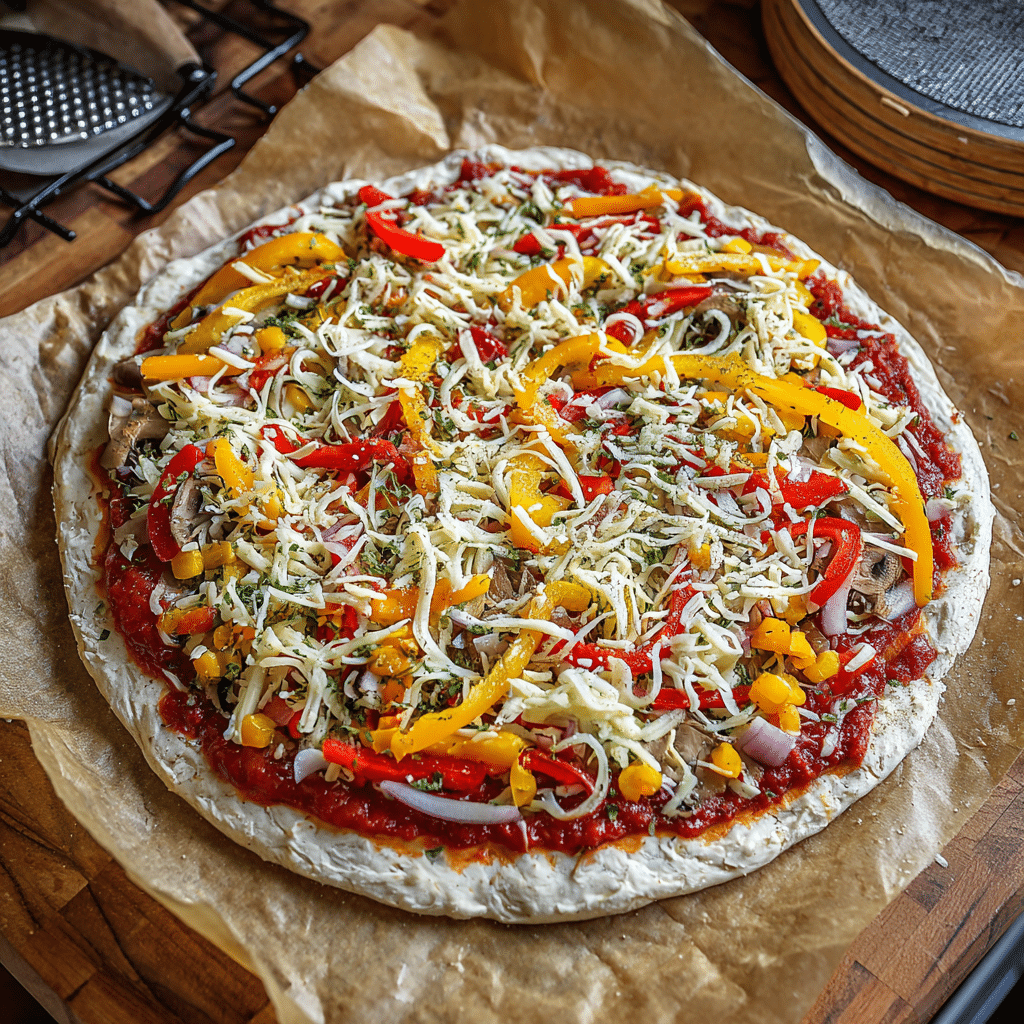
4: Baking, Serving & Storing Your Gluten Free Dairy Free Pizza
Get the Bake Just Right
Baking gluten free dairy free pizza takes a bit more attention than traditional versions. Without gluten and dairy to cushion and melt, timing and temperature are key. Always preheat your oven—450°F minimum. If you have a pizza stone or steel, even better. Place it on the lowest rack to mimic a brick oven effect.
Bake your crust alone for 8–10 minutes first. Then add your sauce, cheese, and toppings and return to the oven for another 10–12 minutes. The edges should brown, the cheese should bubble, and the bottom should feel crisp—not soft or soggy. If you like a charred edge, broil for the final 1–2 minutes.
Let it rest a few minutes before slicing—this helps everything hold together and avoids the dreaded slide of toppings off the crust.
How to Store & Reheat Without Losing Quality
If you have leftovers (rare in my house!), here’s how to keep that pizza night magic going. Store slices in an airtight container, layered between parchment paper, for up to 3 days in the fridge.
To reheat, skip the microwave. Use a skillet with a lid on low heat for 5–6 minutes to keep the crust crispy and cheese soft. You can also bake slices at 375°F for 8–10 minutes.
Want to freeze it? Go ahead. Bake the crust, let it cool, add toppings, then wrap tightly in foil or freezer-safe wrap. When you’re ready to eat, bake straight from frozen at 425°F for about 15 minutes.
That’s it—your perfect gluten free dairy free pizza, from dough to final bite. Whether you’re doing this for health, lifestyle, or love of flavor, trust me: you’re not missing out—you’re gaining something real.
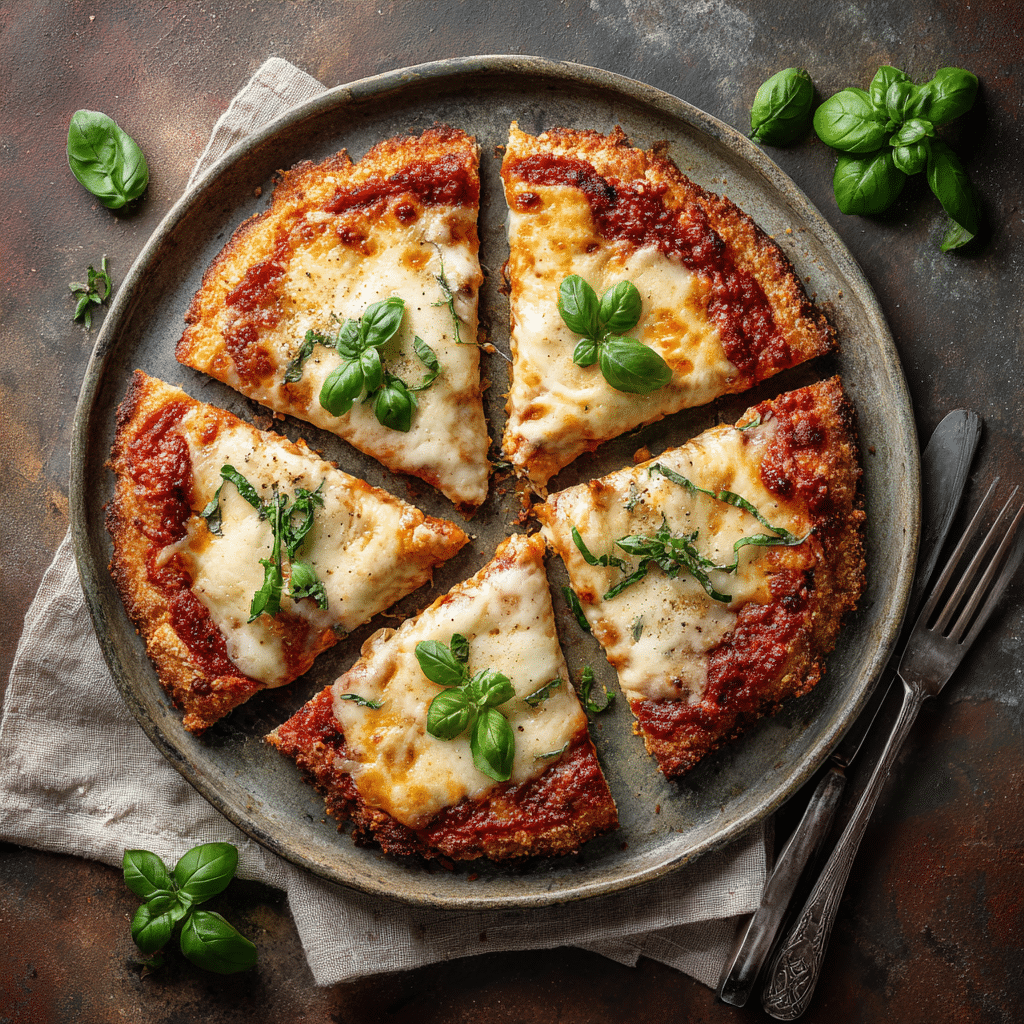
5: Conclusion
Making gluten free dairy free pizza at home isn’t just doable—it’s deeply satisfying. You don’t need to settle for bland crusts or strange cheese substitutes. With the right mix of flours, a flavorful sauce, and fresh, naturally gluten and dairy free toppings, you can craft a pizza that rivals any classic. This recipe is the result of years in a Tuscan kitchen, reimagined for the way we eat now. So whether you’re hosting pizza night or just craving comfort food that loves you back, you’ve got everything you need right here. Your best pizza yet starts today—gluten and dairy not required.
What is a good dairy free substitute for cheese on pizza?
The best crust for gluten free pizza combines brown rice flour, tapioca starch, and almond flour for flavor and texture. Psyllium husk or ground flax adds elasticity. Pre-baking is essential for structure. Yeasted versions offer more rise and chew, while yeast-free ones bake up quicker and crispier.
What crust is best for gluten free pizza?
The best crust for gluten free pizza combines brown rice flour, tapioca starch, and almond flour for flavor and texture. Psyllium husk or ground flax adds elasticity. Pre-baking is essential for structure. Yeasted versions offer more rise and chew, while yeast-free ones bake up quicker and crispier.
Can I freeze gluten free dairy free pizza?
Yes, you can freeze it fully assembled and unbaked or as leftover slices. Wrap tightly in foil or freezer wrap. Bake from frozen at 425°F for 15–18 minutes. Leftovers reheat best in a skillet with a lid or oven to maintain crispness without drying out.
What toppings are naturally gluten and dairy free?
Naturally safe toppings include vegetables like mushrooms, arugula, zucchini, red onion, and bell peppers. Fresh herbs, olives, anchovies, and tomato slices also work. Always double-check sauces or processed items like pepperoni for hidden gluten or dairy.
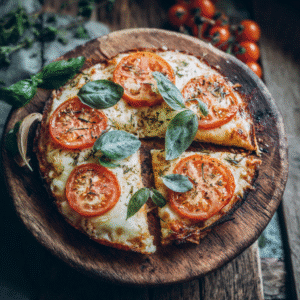
Gluten Free Dairy Free Pizza Recipe That Actually Tastes Amazing
Ingredients
- 1 ½ cups brown rice flour
- ½ cup almond flour
- ½ cup tapioca starch
- 1 tbsp olive oil
- 1 tsp psyllium husk
- 1 tsp salt
- ¾ cup warm water
- ½ cup tomato sauce homemade or canned
- ½ cup dairy free cheese e.g., cashew or coconut-based
- Fresh basil olives, vegetables (optional toppings)
Instructions
- 1. Preheat your oven to 450°F and place a pizza stone or baking sheet inside.
- 2. Mix all dry ingredients in a large bowl.
- 3. Stir in olive oil and warm water until a dough forms.
- 4. Let it sit for 10 minutes to absorb.
- 5. Press dough onto parchment in a 10-inch circle.
- 6. Pre-bake crust for 8–10 minutes.
- 7. Spread tomato sauce, sprinkle cheese and add toppings.
- 8. Bake for another 10–12 minutes, or until edges are golden.
- 9. Cool for 2 minutes, slice and serve.

